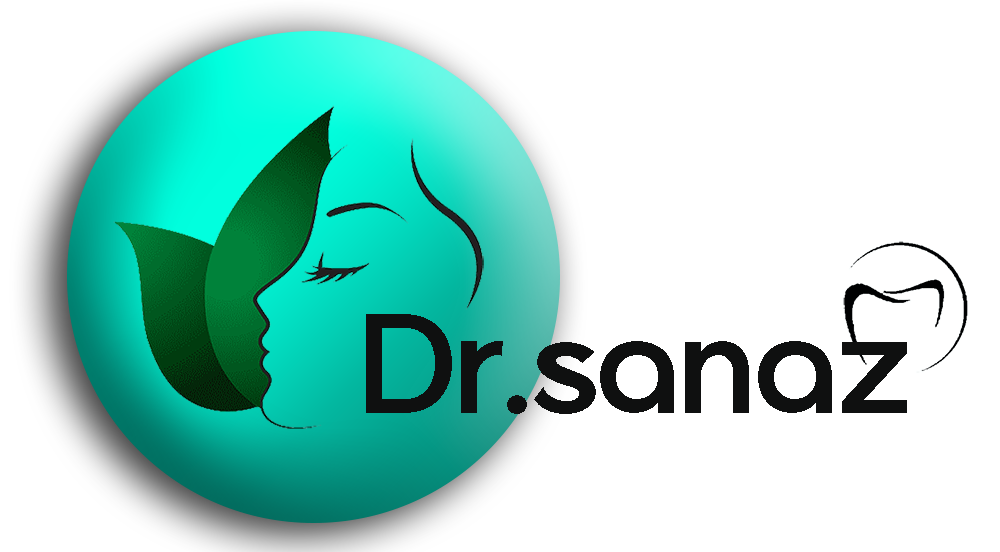
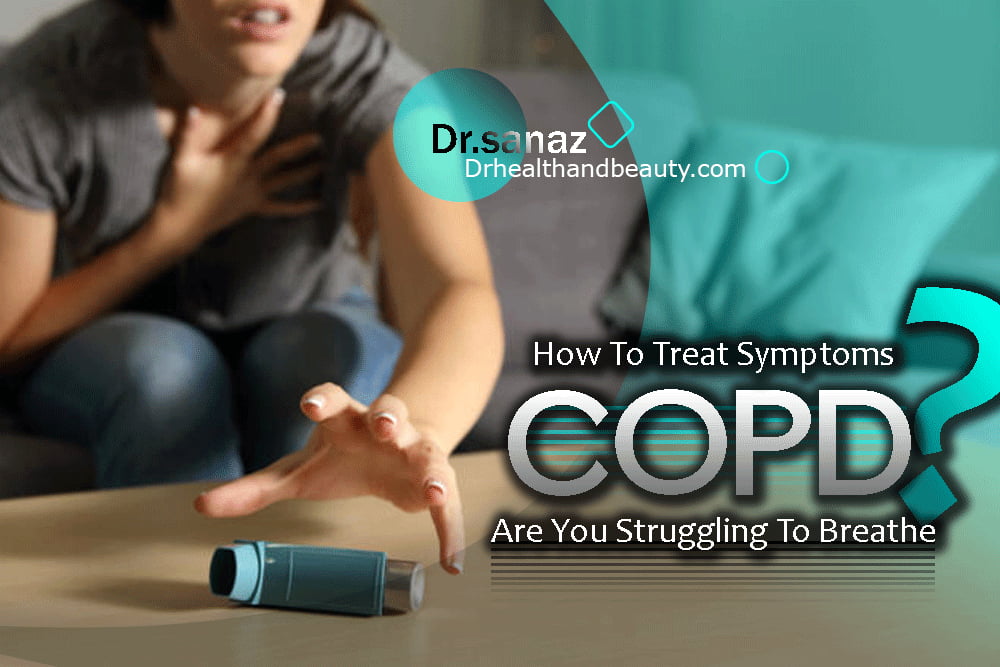
How To Treat COPD Symptoms? Are You Struggling To Breathe?
Chronic obstructive pulmonary disease, or COPD, is a group of progressive diseases of the respiratory system, among which emphysema and chronic bronchitis are located. Most people with COPD generally suffer from these two common conditions:
Pulmonary emphysema slowly destroys the air sacs in six people with difficulty expelling air from the lungs. Bronchitis causes inflammation and narrowing of the bronchial tubes, which results in the accumulation of mucus liquid.
The leading cause of COPD is tobacco use. Long-term exposure to stimulants can also cause COPD symptoms. These diseases usually occur over a long period and not suddenly.
Table of Contents
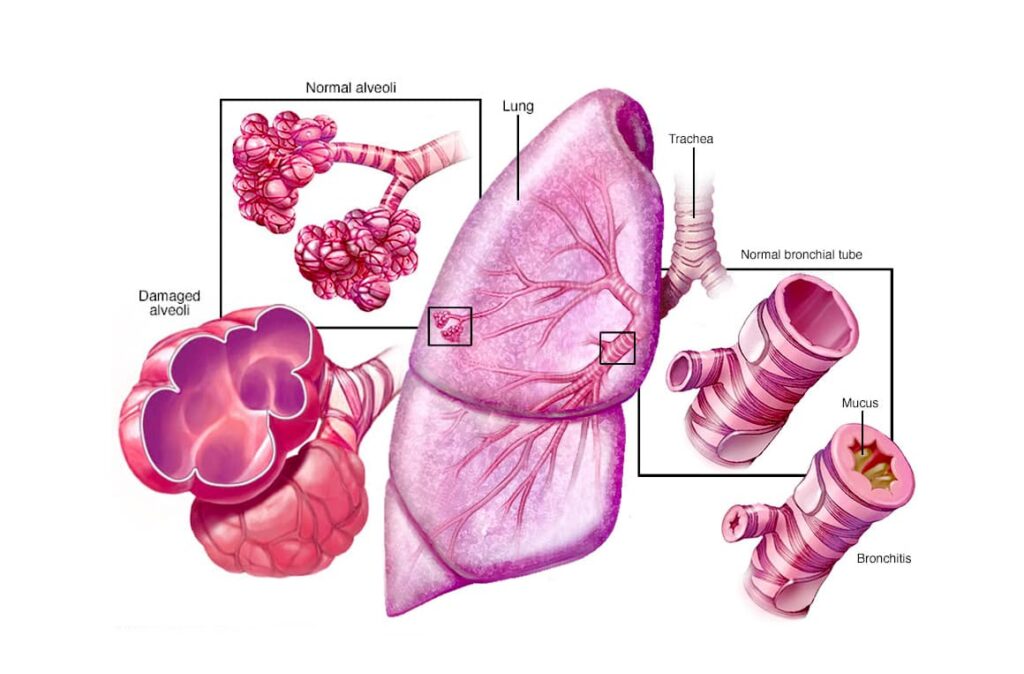
COPD is usually diagnosed using imaging, blood, and lung function tests.
There is no definitive treatment for chronic obstructive pulmonary disease. However, symptomatic treatments can increase patients’ quality of life by curing the disease’s symptoms and reducing the risk of related complications. The use of drugs, oxygen therapy, and surgery are among the ways to treat this disease.
If no action is taken to treat COPD, this disease’s progression rate may increase, and heart problems and respiratory infections may also appear or become more severe.
COPD Symptoms
Difficulty breathing is one of the symptoms of COPD. COPD symptoms are mild at the beginning of the disease process and usually include intermittent cough and shortness of breath. COPD symptoms may become more severe as the disease progresses, and breathing becomes difficult.
People with COPD may experience shortness of breath, wheezing, and increased secretion of mucus in their respiratory system. Some patients may experience increased respiratory symptoms, and breathing becomes even more difficult than before.
As mentioned, COPD symptoms are mild initially, and this disease may even be mistaken for a cold.

COPD symptoms include the following:
- Periods of shortness of breath, especially after physical activity
- Mild but recurring coughs
- Increased need to clear the throat, especially after waking up in the morning
At the beginning of the disease, there may also be changes in people’s performance, such as avoiding stairs and sports activities.
COPD symptoms can become more severe over time and harder to ignore. As lung damage increases, people with this disease may experience:
- Shortness of breath, even after doing simple physical activities such as walking and climbing stairs
- Wheezing, especially when exhaling air from the lungs
- chest pain
- Chronic cough that can be with or without phlegm
- The need to empty sputum from the respiratory tract daily
- Catching colds, flu, and other respiratory infections continuously
- lack of energy
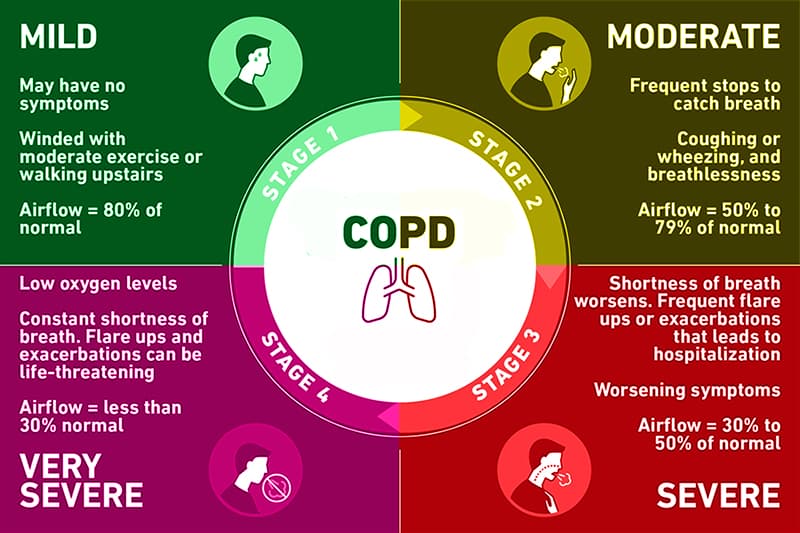
In more advanced stages, COPD symptoms may include:
- Weakness and fatigue
- Swelling of the legs (ankle to higher parts)
- Weight Loss
- If the following cases are encountered, medical attention will be urgent:
- Changing the color of the nails to blue or gray is a sign of a decrease in blood oxygen.
- Severe shortness of breath to the point where you are unable to speak.
- Feeling confused, confused, or fainting
- increase of heart rate
COPD symptoms may be more severe with smoking or continuous exposure to smoke from these substances.

Emergency treatment
Urgent medical attention is required in the following cases:
- Your nails or lips have turned bluish or gray, indicating low oxygen levels in the blood.
- You have trouble breathing or cannot speak
- You feel confused, confused, or weak
- You have palpitations
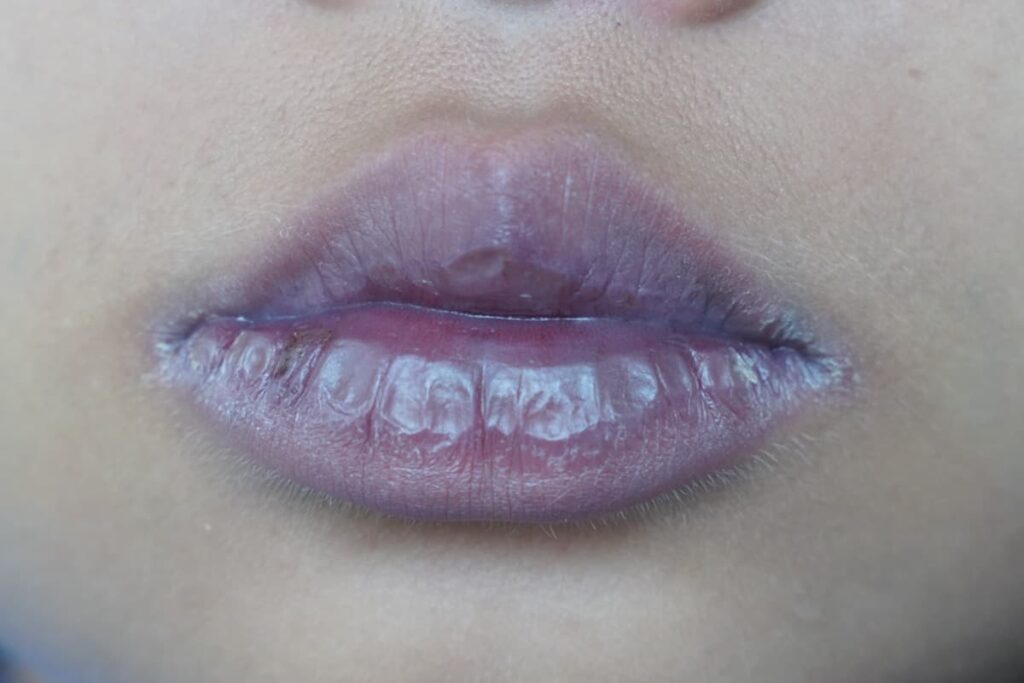
What factors cause COPD?
In developed countries, the leading cause of COPD is smoking. Nearly 90% of patients with chronic obstructive pulmonary disease are people who used to smoke or are still smoking.
20-30% of long-term smokers will develop COPD. Many people also suffer from other respiratory disorders or reduced lung function.
Most patients with COPD are at least 40 years old and have a smoking history. The more and longer a person smokes, the higher the risk of developing COPD. In addition to smoking, smoking cigarettes, pipes, or inhaling smoke from tobacco products can also cause COPD.
In the case of asthma, the risk of chronic obstructive pulmonary disease will be even higher in people who use tobacco products.
COPD can also occur if you inhale smoke or chemicals in the workplace. Air pollution and dust inhalation can also be the causes of this disease.
In developing countries, due to the lack of good quality home ventilation, in addition to smoking, inhalation of smoke from fuel consumption for cooking and heating can also be effective in the occurrence of COPD.
Chronic obstructive pulmonary disease can also have a genetic background. Nearly 5% of people with this disease suffer from the lack of a protein called alpha-1-antitrypsin. The lack of this protein causes lung tissue to atrophy as well as damage to the liver. Other genetic disorders may also contribute to this disease. It should be noted that chronic obstructive pulmonary disease is not a contagious disease.
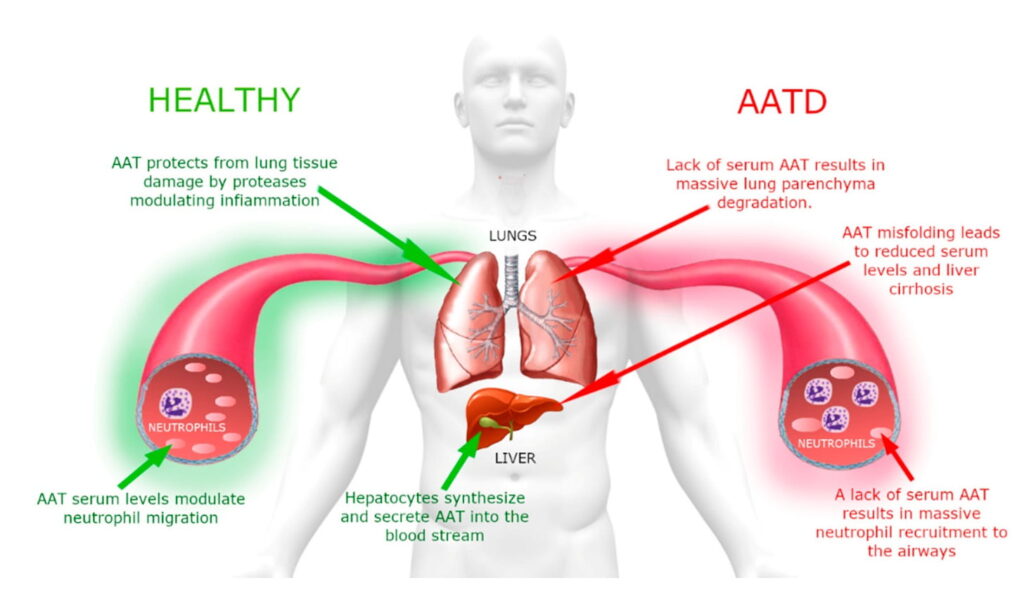
Diagnosis of chronic obstructive pulmonary disease
It is not possible to diagnose COPD using only a particular test. The diagnosis of this disease is based on the observation of symptoms and clinical examination, along with the results of tests.
When visiting the doctor, the patient must tell him all the COPD symptoms that he has been involved in. Also, the attending physician must be aware of the existence of any of the following conditions:
- If the patient smokes or has smoked in the past.
- The patient is exposed to substances that stimulate the respiratory system in the work environment.
- The patient is constantly exposed to the smoke from consuming tobacco products.
- There is a history of COPD in the family.
- Asthma or other respiratory problems
- Use of non-prescription drugs by the patient

During the clinical examination, the doctor will use a stethoscope to listen to the sound of the patient’s lungs while breathing, and based on the information obtained, he may also prescribe tests to diagnose the disease better:
- Spirometry is a non-invasive test to evaluate lung function. In this test, after taking a deep breath, the patient blows into a tube connected to a spirometer to evaluate his lung function.
- Using imaging methods such as X-ray and CT scans is also effective in diagnosing COPD. These imaging methods can provide detailed images of a patient’s lungs, blood vessels, and heart.
- The arterial blood gas test is performed by taking a blood sample from the arterial system and measuring the amount of oxygen, carbon dioxide, and other gases.
- These tests can help doctors diagnose COPD symptoms or other respiratory diseases, such as asthma, obstructive lung disease, or heart failure.
Difference Between Asthma and COPD Symptoms
Asthma and COPD are similar in many ways, including similar symptoms such as shortness of breath and blocked airflow. However, COPD is chronic and progressive. Allergens often trigger asthma, but the leading cause of COPD is smoking.

Conclusion
Finally, remember that chronic obstructive pulmonary disease (COPD) causes lung damage you cannot reverse. This disease is usually caused by prolonged exposure to irritating gases or particulate matter, often from cigarette smoke. People with COPD are at increased risk of heart disease, lung cancer, and other conditions. However, you can learn to manage COPD symptoms. You will breathe easier if you support your lung capacity and combat lung irritation. By getting treatment early, you have the best chance of continuing to do the things you love.
Share in :
Explore more


Sitting A Long Time And Being Overweight- Drhealthandbeauty

